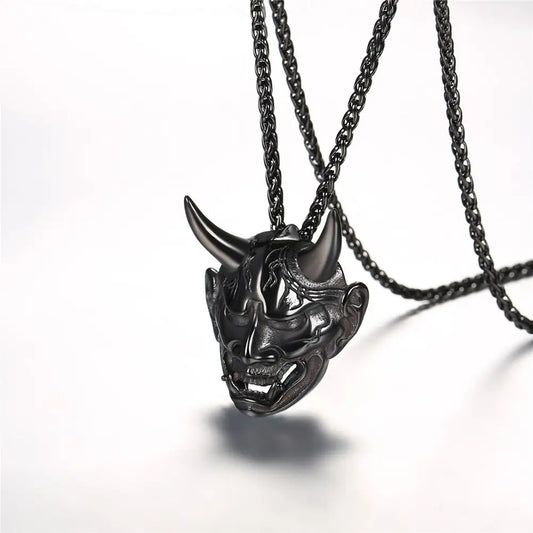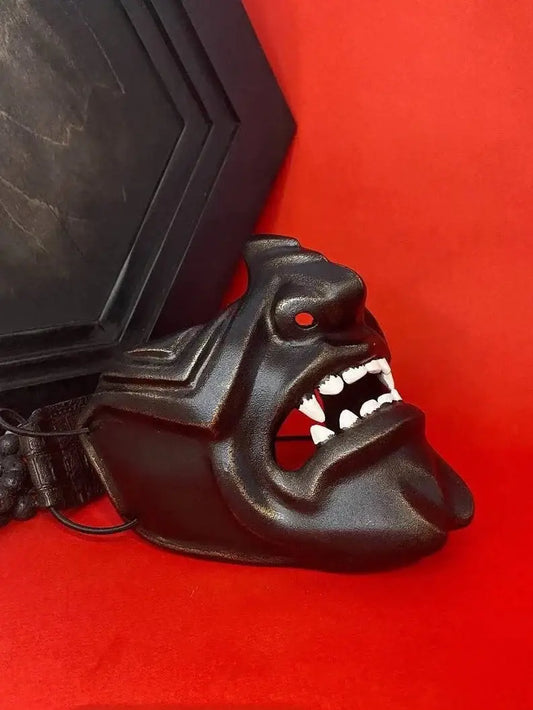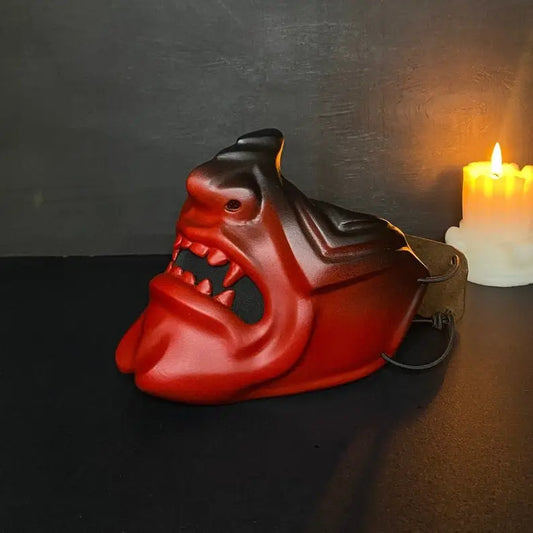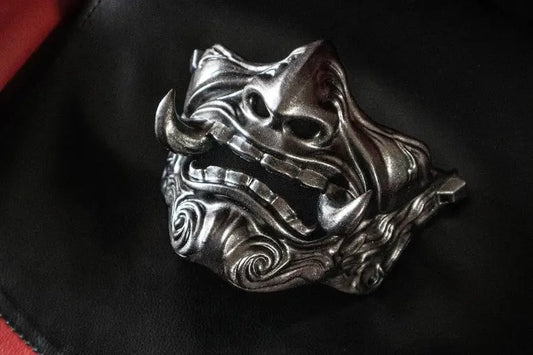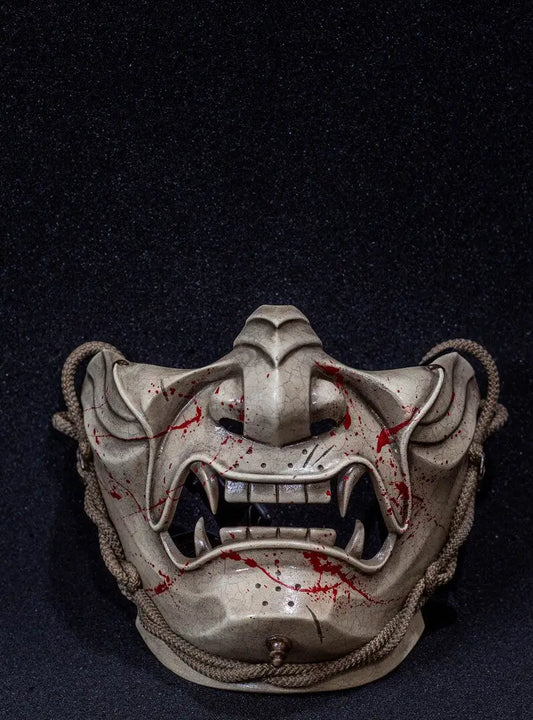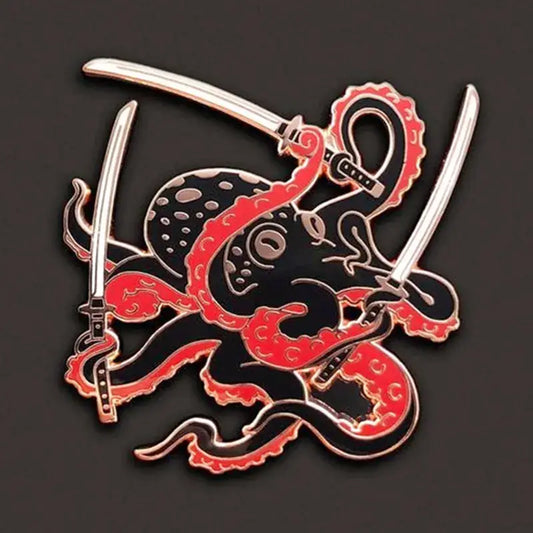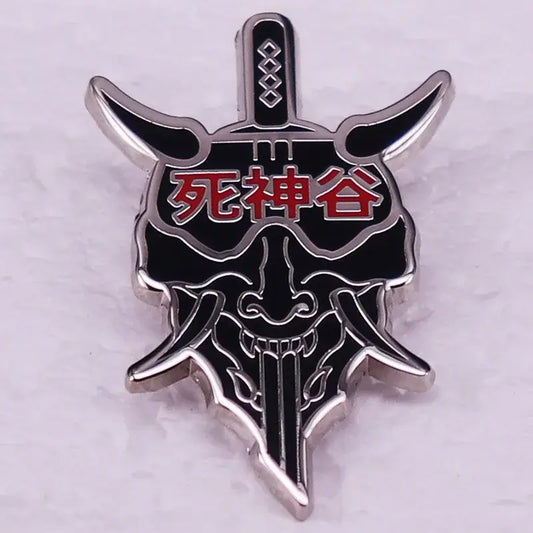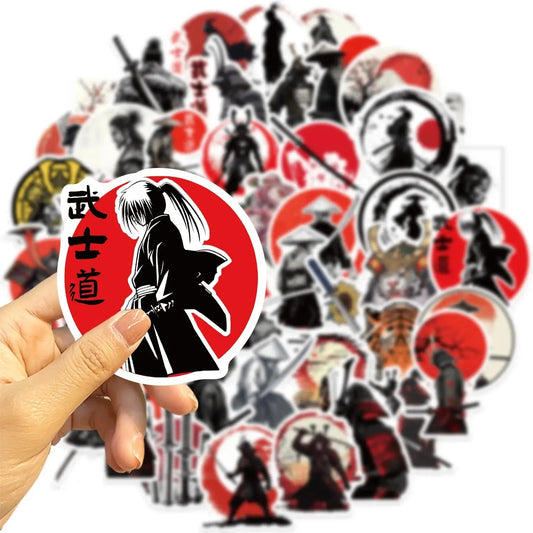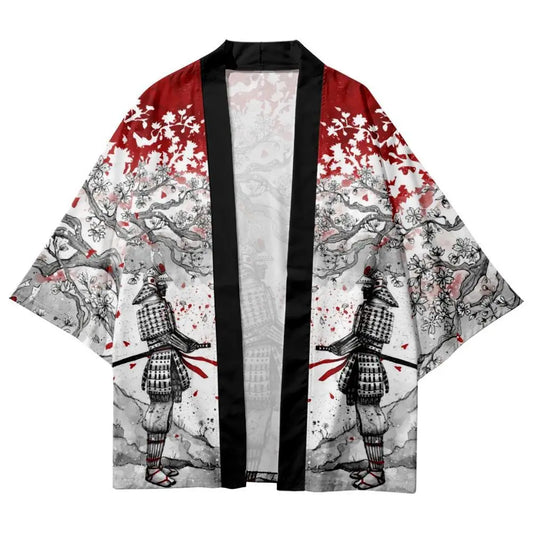
Japanese Clans

Yamana Clan
The Yamana (Japanese 山名氏 Yamana-shi) were a family of the Japanese sword nobility (Buke), descended from Minamoto no Yoshishige (源 義重) and through him from the (Seiwa Genji). Under Toyotomi...
Yamana Clan
The Yamana (Japanese 山名氏 Yamana-shi) were a family of the Japanese sword nobility (Buke), descended from Minamoto no Yoshishige (源 義重) and through him from the (Seiwa Genji). Under Toyotomi...

Toki Clan
The Toki Clan ( 土岐氏 Toki-shi?) was a powerful clan that ruled from the Kamakura Period to the Edo Period of Japanese history. They descended from Emperor Seiwa through Minamoto...
Toki Clan
The Toki Clan ( 土岐氏 Toki-shi?) was a powerful clan that ruled from the Kamakura Period to the Edo Period of Japanese history. They descended from Emperor Seiwa through Minamoto...

Sakakibara Clan
The Sakakibara clan (榊原氏, Sakakibara-shi) was a branch of daimyōs of the Minamoto samurai clan during the Edo period.During the Edo period, the Sakakibara were part of the fudai daimyo...
Sakakibara Clan
The Sakakibara clan (榊原氏, Sakakibara-shi) was a branch of daimyōs of the Minamoto samurai clan during the Edo period.During the Edo period, the Sakakibara were part of the fudai daimyo...

Yamauchi Clan
The Yamanouchi or Yamauchi (Japanese 山内氏, Yama(no)uchi-shi) were a family of the Japanese sword nobility (Buke) derived from Fujiwara no Hidesato. With an income of 242,000 koku, the Yamanouchi residing...
Yamauchi Clan
The Yamanouchi or Yamauchi (Japanese 山内氏, Yama(no)uchi-shi) were a family of the Japanese sword nobility (Buke) derived from Fujiwara no Hidesato. With an income of 242,000 koku, the Yamanouchi residing...

Ōtomo Clan
The Ōtomo clan (jap. 大友氏, Ōtomo-shi) was a Japanese clan traced back to Fujiwara no Nagaie (1005-1064). The clan played an important role in Kyūshū, the southernmost of Japan's four...
Ōtomo Clan
The Ōtomo clan (jap. 大友氏, Ōtomo-shi) was a Japanese clan traced back to Fujiwara no Nagaie (1005-1064). The clan played an important role in Kyūshū, the southernmost of Japan's four...

Rokkaku Clan
The Rokkaku clan (六角氏 Rokkaku-shi) was a Japanese clan in Ōmi province. Rokkaku Clan History Founded by Sasaki Yasutsuna of Ōmi province in the 13th century, the name Rokkaku was...
Rokkaku Clan
The Rokkaku clan (六角氏 Rokkaku-shi) was a Japanese clan in Ōmi province. Rokkaku Clan History Founded by Sasaki Yasutsuna of Ōmi province in the 13th century, the name Rokkaku was...
Epic Gear for Modern Samurais✨
-
Samurai Katana Umbrella
Regular price 62$ USDRegular priceUnit price / per -
Black Steel Oni Necklace
Regular price 38$ USDRegular priceUnit price / per -
Shogun Rage Necklace
Regular price 26$ USDRegular priceUnit price / per -
Japanese Demon Controller Holder Stand
Regular price 35$ USDRegular priceUnit price / per -
Sekiro Mini Katana Sword
Regular price 17$ USDRegular priceUnit price / per -
Black Oni Samurai Menpo Mask
Regular price 234$ USDRegular priceUnit price / per -
White Oni Samurai Menpo Mask
Regular price 234$ USDRegular priceUnit price / per -
Red Oni Samurai Menpo Mask
Regular price 234$ USDRegular priceUnit price / per -
Silver Oni Demon Samurai Mask
Regular price 184$ USDRegular priceUnit price / per -
Blood Ghost of Tsushima Samurai Oni Mask
Regular price 214$ USDRegular priceUnit price / per -
Samurai Octopus Katana Enamel Pin
Regular price 17$ USDRegular priceUnit price / per -
Oni Demon Katana Enamel Pin
Regular price 13$ USDRegular priceUnit price / per -
Japanese Samurai Stickers
Regular price 17$ USDRegular priceUnit price / per -
Samurai Horse Rider Shorts
Regular price 33$ USDRegular priceUnit price / per -
Oni Katana Harem Pants
Regular price 38$ USDRegular priceUnit price / per -
Katana Blades Harem Pants
Regular price 38$ USDRegular priceUnit price / per -
Red Samurai Skull Haori
Regular price 35$ USDRegular priceUnit price / per -
Katana Kitsune Haori
Regular price 35$ USDRegular priceUnit price / per -
Red Samurai Haori
Regular price 35$ USDRegular priceUnit price / per -
Samurai White Sakura Haori
Regular price 35$ USDRegular priceUnit price / per -
Black Katana Gear Shifter
Regular price 35$ USDRegular priceUnit price / per -
Samurai Katana Pen
Regular price 17$ USDRegular priceUnit price / per
Warriors of the Rising Sun:
The Epic Saga of Japan's Most Powerful Clans
Japan's history is filled with the rise and fall of powerful clans that shaped the destiny of the nation for centuries. From the samurai to the shogunate, these clans wielded immense power, led fierce warriors, and established legacies that would influence the cultural and political landscape of Japan forever. Each clan has a unique story intertwined with honor, warfare, betrayal, and a relentless quest for dominance. In this epic narrative, we will delve into the origins, evolution, and influence of these pivotal Japanese clans, exploring their cultural significance and the battles that defined them.
Origins of Japanese Clans
The concept of clans, or "uji" (氏), in Japan emerged during the Kofun period (250-538 CE) when families and kin groups united under a common ancestor, often a divine or legendary figure. These clans functioned as both social and political units, with each clan led by a chieftain or patriarch who wielded power and authority. The Yamato clan, which would eventually become Japan's imperial family, emerged during this period as the most powerful, claiming divine descent from the sun goddess Amaterasu.
By the Heian period (794-1185), the uji system had evolved, with powerful families like the Fujiwara, Taira, Minamoto, and Tachibana dominating the political landscape. These clans were heavily involved in the courtly intrigues and military conflicts that characterized the era. The clans often maintained a complex balance of power with the imperial court, with some serving as loyal vassals, while others maneuvered to establish their own supremacy.
The Rise of Samurai Clans
The Heian period marked the beginning of Japan's feudal era, characterized by the emergence of the samurai, or "bushi" (武士). The samurai were warrior nobles who served their lords, or "daimyō," with unwavering loyalty. As the imperial court's power waned, the samurai clans began to assert themselves more aggressively, eventually eclipsing the authority of the emperor.
The Genpei War (1180-1185) was a decisive conflict between two of Japan's most powerful clans: the Taira (Heike) and the Minamoto (Genji). This war would not only shape the future of Japan but also mark the rise of the samurai class. The Minamoto clan, led by Minamoto no Yoritomo, emerged victorious and established the Kamakura Shogunate in 1192, signifying the dawn of the shogunate era, where military rule would become the norm for centuries to come.
Prominent Japanese Clans
1. The Minamoto Clan (源氏):
The Minamoto clan, also known as the Genji, played a pivotal role in the establishment of the samurai-dominated shogunate system. Their victory in the Genpei War was a turning point in Japanese history. Minamoto no Yoritomo, the clan's most famous leader, established the Kamakura Shogunate, becoming Japan's first shogun. Under Yoritomo's rule, the power dynamics of Japan shifted from the imperial court to the military class. The Minamoto were known for their military prowess and strategic brilliance, exemplified by Minamoto no Yoshitsune, Yoritomo's half-brother, whose legendary battles against the Taira and his tragic death cemented him as one of Japan's greatest historical figures.
2. The Taira Clan (平氏):
The Taira, or Heike, clan was another significant player in early Japanese history. They reached the height of their power in the late Heian period, effectively controlling the imperial court. Taira no Kiyomori, a prominent Taira leader, used marriage alliances to secure his family's influence. However, the Taira's rapid ascent to power also led to their downfall. Their defeat in the Genpei War marked the end of their dominance. The Heike Monogatari, an epic narrative detailing the rise and fall of the Taira, remains one of the most important works of Japanese literature, capturing the tragic beauty of impermanence, or "mujo."
3. The Fujiwara Clan (藤原氏):
Unlike the warrior clans, the Fujiwara were known for their political cunning rather than martial strength. For much of the Heian period, the Fujiwara clan effectively controlled the Japanese imperial court by marrying their daughters to emperors. The clan's strategy of "marriage politics" allowed them to wield power from behind the throne. Fujiwara no Michinaga, one of the most influential figures in the clan's history, is often seen as the zenith of their power. However, as the samurai class rose to prominence, the Fujiwara's influence began to wane, leading to the decline of courtly politics and the rise of the military government.
4. The Hojo Clan (北条氏):
The Hojo clan emerged as a powerful family during the Kamakura Shogunate, serving as regents (shikken) for the shoguns. The Hojo were known for their administrative skills and their ability to maintain control over the various warrior factions of the era. After Minamoto no Yoritomo's death, the Hojo family became the de facto rulers of Japan, with Hojo Masako, Yoritomo’s widow, and her brother Hojo Yoshitoki playing crucial roles in maintaining their power. The Hojo clan's authority continued until the fall of the Kamakura Shogunate in 1333, when they were overthrown by the forces loyal to Emperor Go-Daigo, who sought to restore imperial rule.
5. The Ashikaga Clan (足利氏):
The Ashikaga clan rose to prominence during the turbulent Nanboku-cho period (1336-1392), which was characterized by a civil war between two rival imperial courts. Ashikaga Takauji, originally a general loyal to Emperor Go-Daigo, betrayed the emperor and established the Ashikaga Shogunate, or Muromachi Shogunate, in 1338. The Ashikaga Shogunate was marked by cultural flourishing but also by political instability and constant power struggles among regional daimyōs. Ashikaga Yoshimitsu, the third shogun, is often credited with bringing temporary stability and fostering the development of the arts, including the famous Noh theater.
6. The Oda Clan (織田氏):
During the Sengoku period (1467-1603), Japan was fractured into warring states, each led by powerful daimyōs vying for control. The Oda clan, under the leadership of Oda Nobunaga, was instrumental in the unification of Japan. Nobunaga was a ruthless and innovative military leader who utilized new tactics and firearms to subdue his enemies. His most significant achievements included the defeat of the Imagawa clan at the Battle of Okehazama (1560) and his relentless campaign against the Takeda clan. Nobunaga's ambition was cut short by betrayal in 1582, but his groundwork for unification set the stage for his successors.
7. The Toyotomi Clan (豊臣氏):
Following Oda Nobunaga's death, his loyal general, Toyotomi Hideyoshi, rose to power and continued the quest for unification. Hideyoshi was a brilliant strategist who managed to bring most of Japan under his control through a combination of military conquest and diplomacy. He implemented several key reforms, such as the "sword hunt," which sought to disarm peasants and consolidate power. Despite his achievements, Hideyoshi's ambitious invasions of Korea ended in failure, and his clan's power weakened after his death in 1598. The Toyotomi clan's downfall was cemented at the Battle of Sekigahara (1600) when Tokugawa Ieyasu defeated the Toyotomi loyalists.
8. The Tokugawa Clan (徳川氏):
The Tokugawa clan, under the leadership of Tokugawa Ieyasu, established the Edo Shogunate in 1603, which would rule Japan for over 250 years in what became known as the Edo period. Ieyasu's victory at the Battle of Sekigahara solidified his authority, allowing him to consolidate power and bring peace to a war-torn nation. The Tokugawa Shogunate implemented a strict class system and enacted policies of isolation (sakoku) to maintain stability and control. The Tokugawa era is often characterized by relative peace, economic growth, and cultural development, including the rise of Kabuki theater and Ukiyo-e art. However, the rigidity of the Tokugawa system would eventually lead to its decline in the mid-19th century, culminating in the Meiji Restoration of 1868.
Clan Warfare and Feudal Alliances
Japanese clans were constantly engaged in warfare, both against external enemies and amongst themselves. Battles were fought for territory, influence, and honor, with alliances and betrayals commonplace. The Sengoku period, also known as the "Warring States" period, is perhaps the most famous era of clan warfare. This time of chaos saw the rise of powerful warrior leaders like Oda Nobunaga, Toyotomi Hideyoshi, and Tokugawa Ieyasu, who each sought to bring the warring factions under a single rule.
Clan alliances were often forged through marriage, with daughters of powerful families married off to secure political ties. However, such alliances were fragile and could be broken when political interests shifted.
Samurai Store ⚔️
-

Samurai Shirts
Channel the Spirit of the Warrior with Our Samurai Shirts In the...
-

Samurai Hoodies
Samurai Hoodies - Embrace the Warrior Within Dive into the world of...
-

Samurai Masks
Warrior Spirit, Unmasked: Introducing Samurai Masks Unleash the disciplined intensity and cultural...




